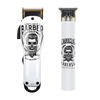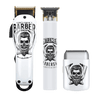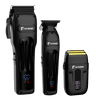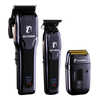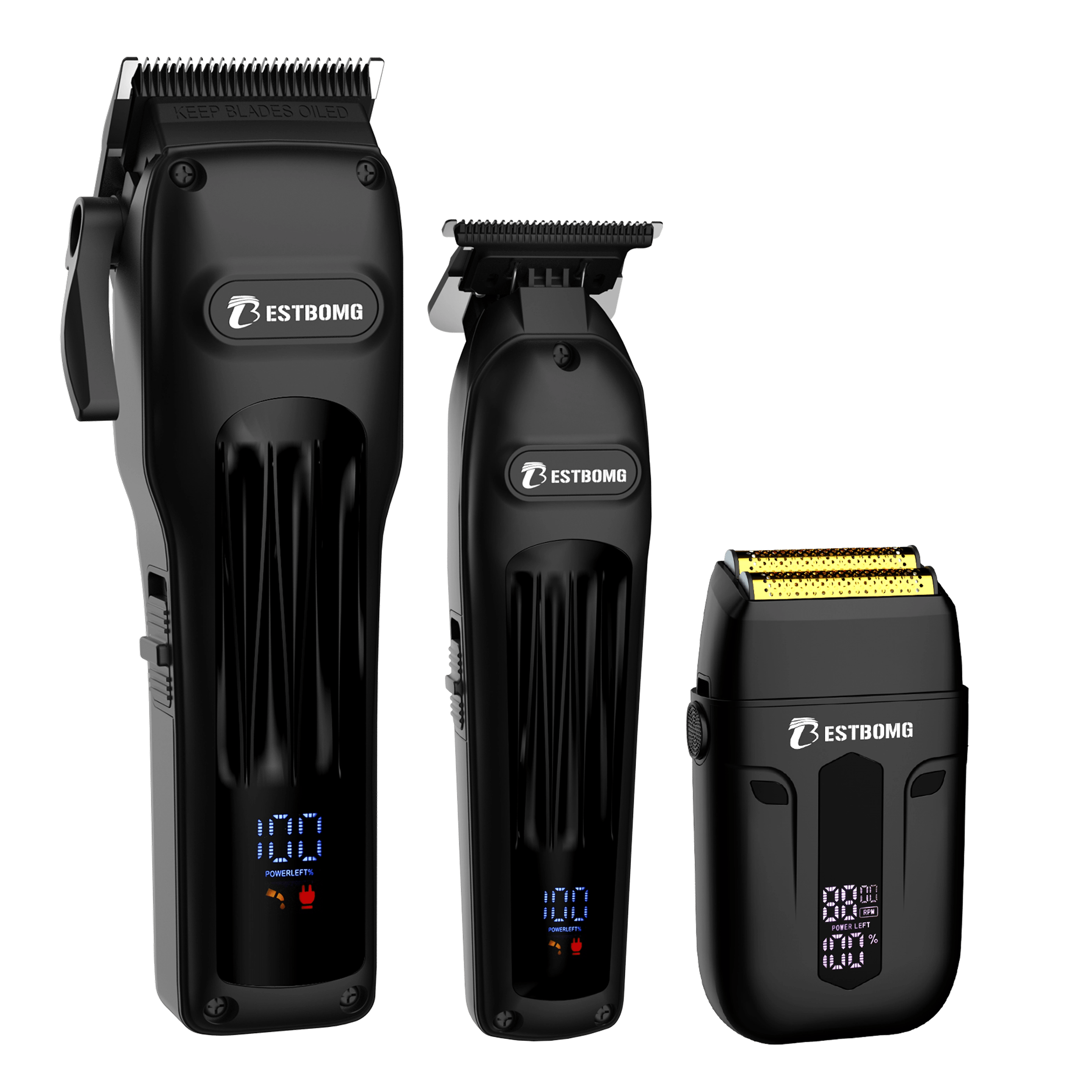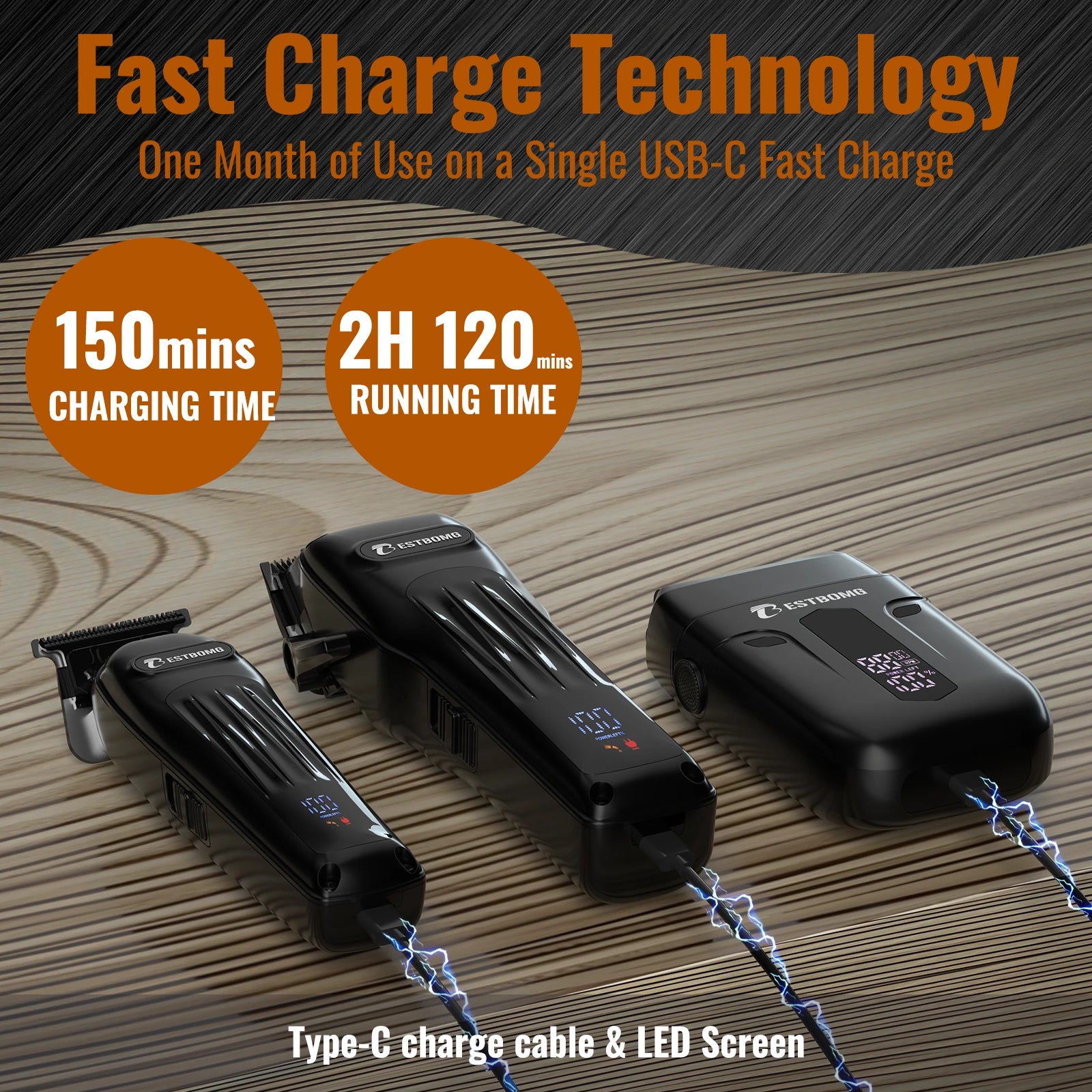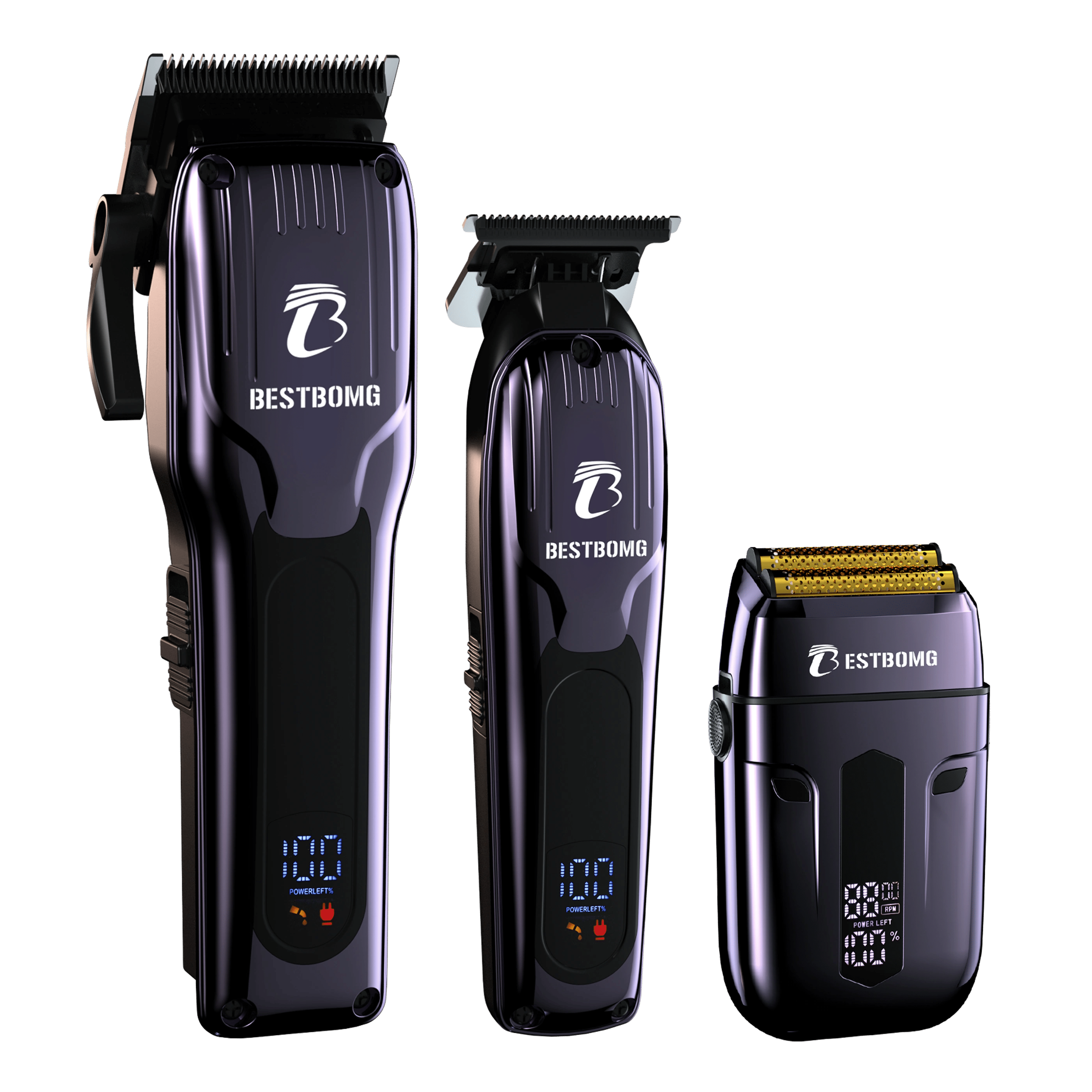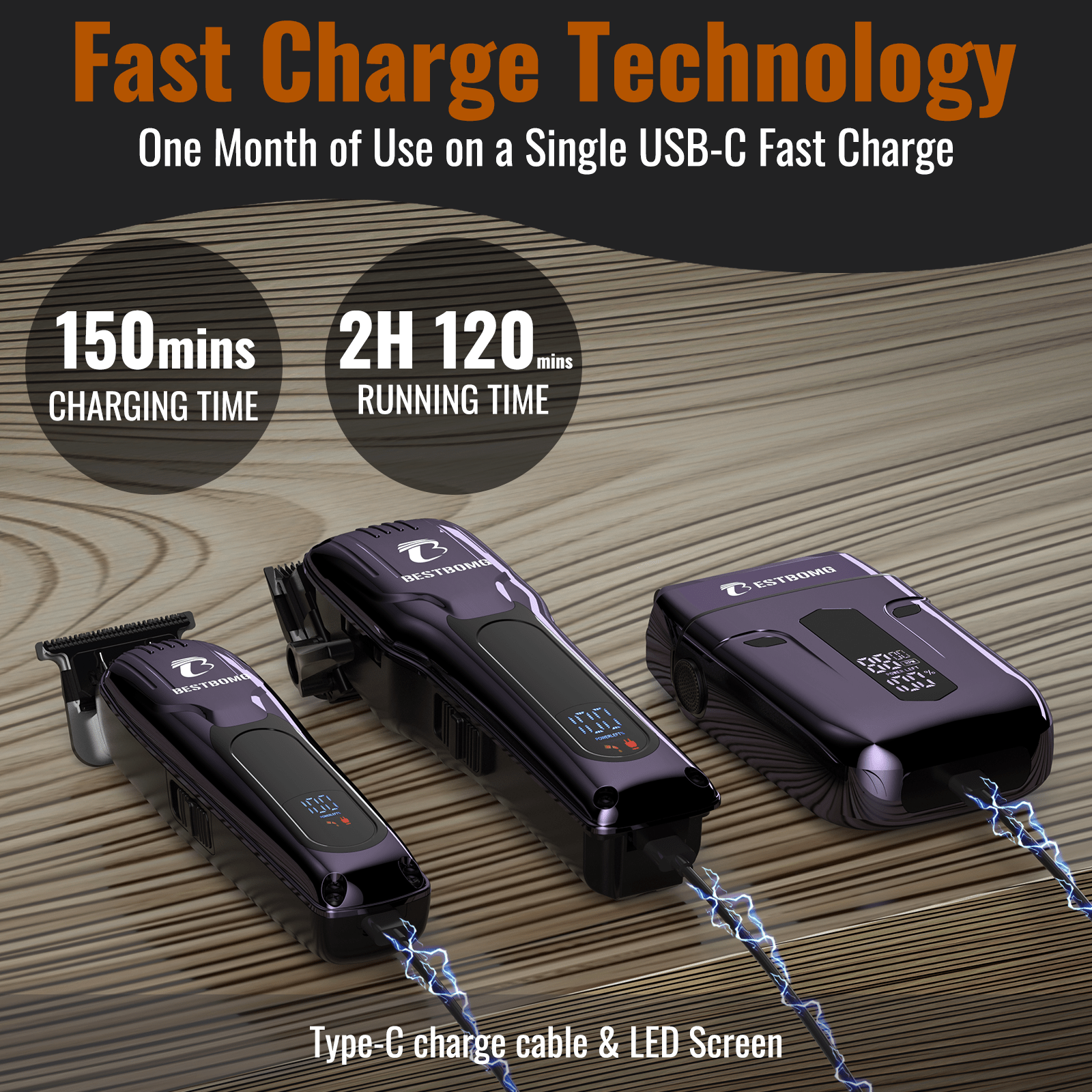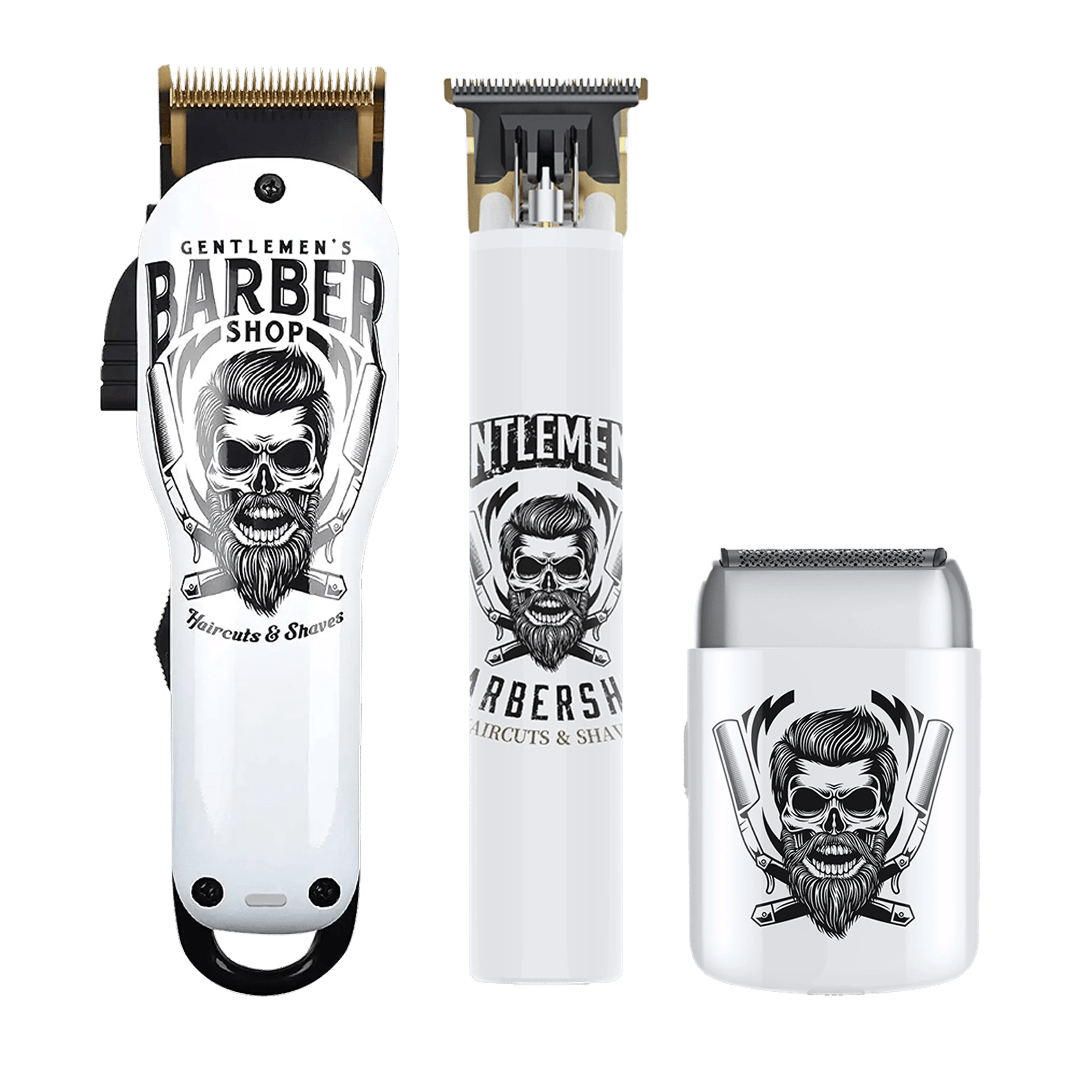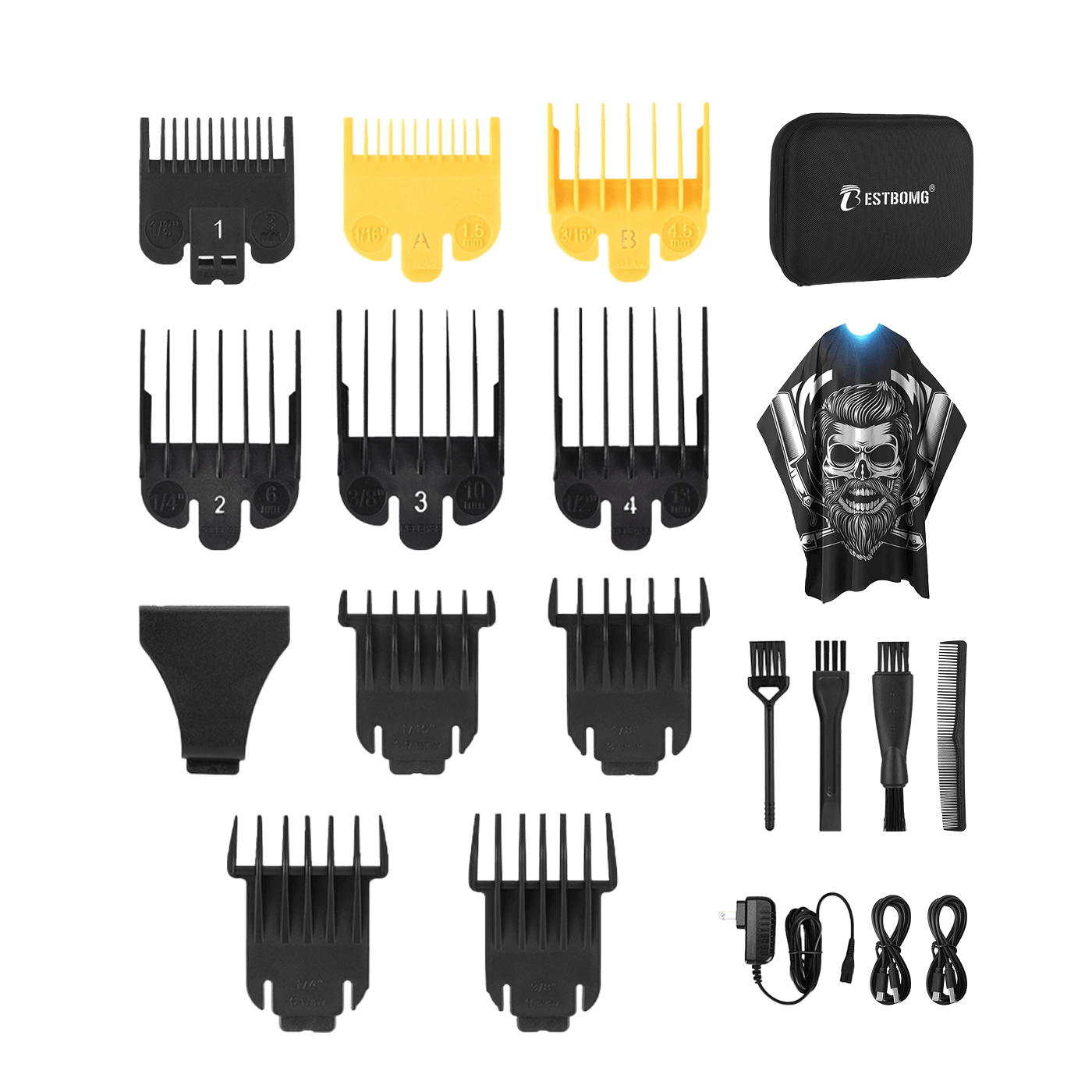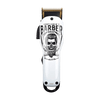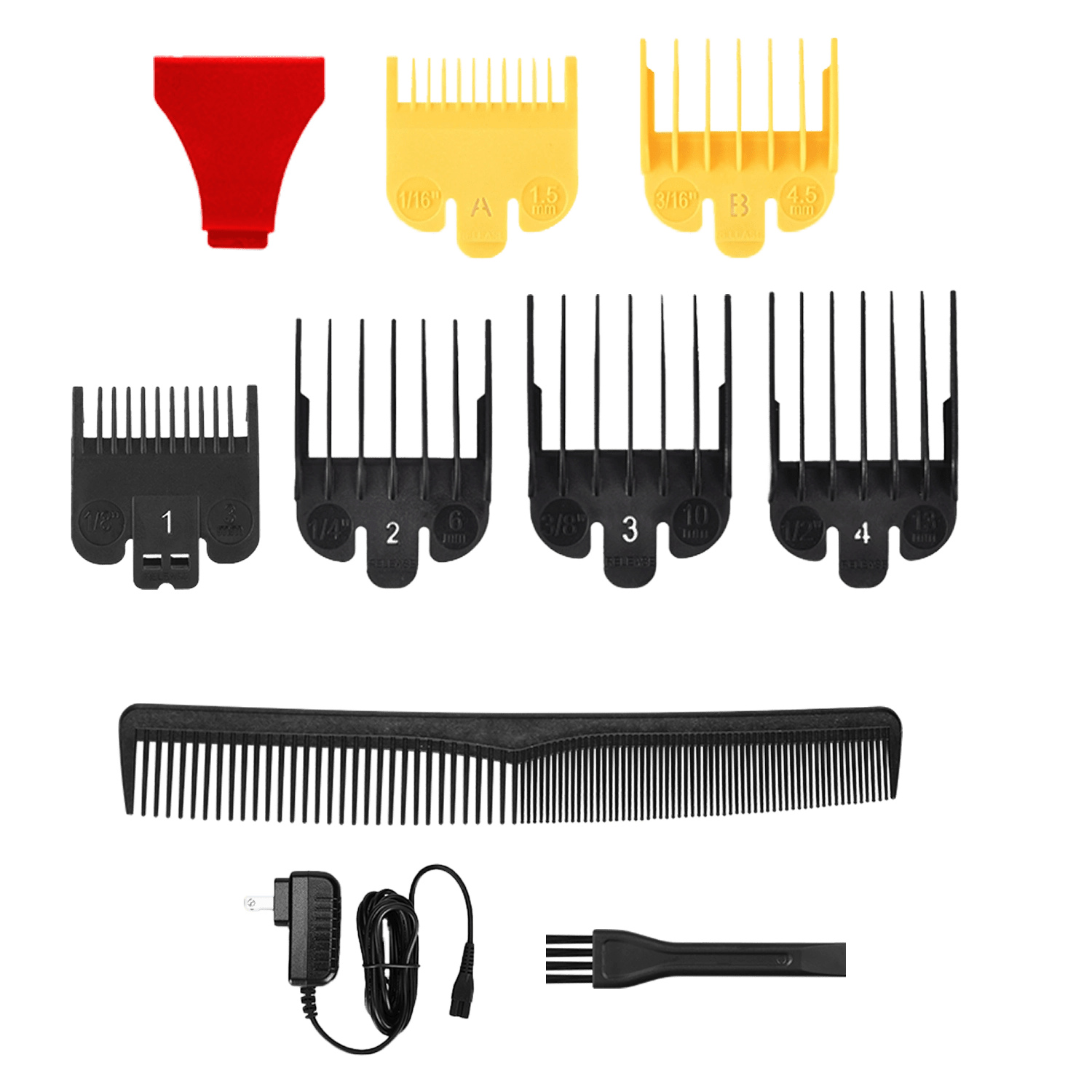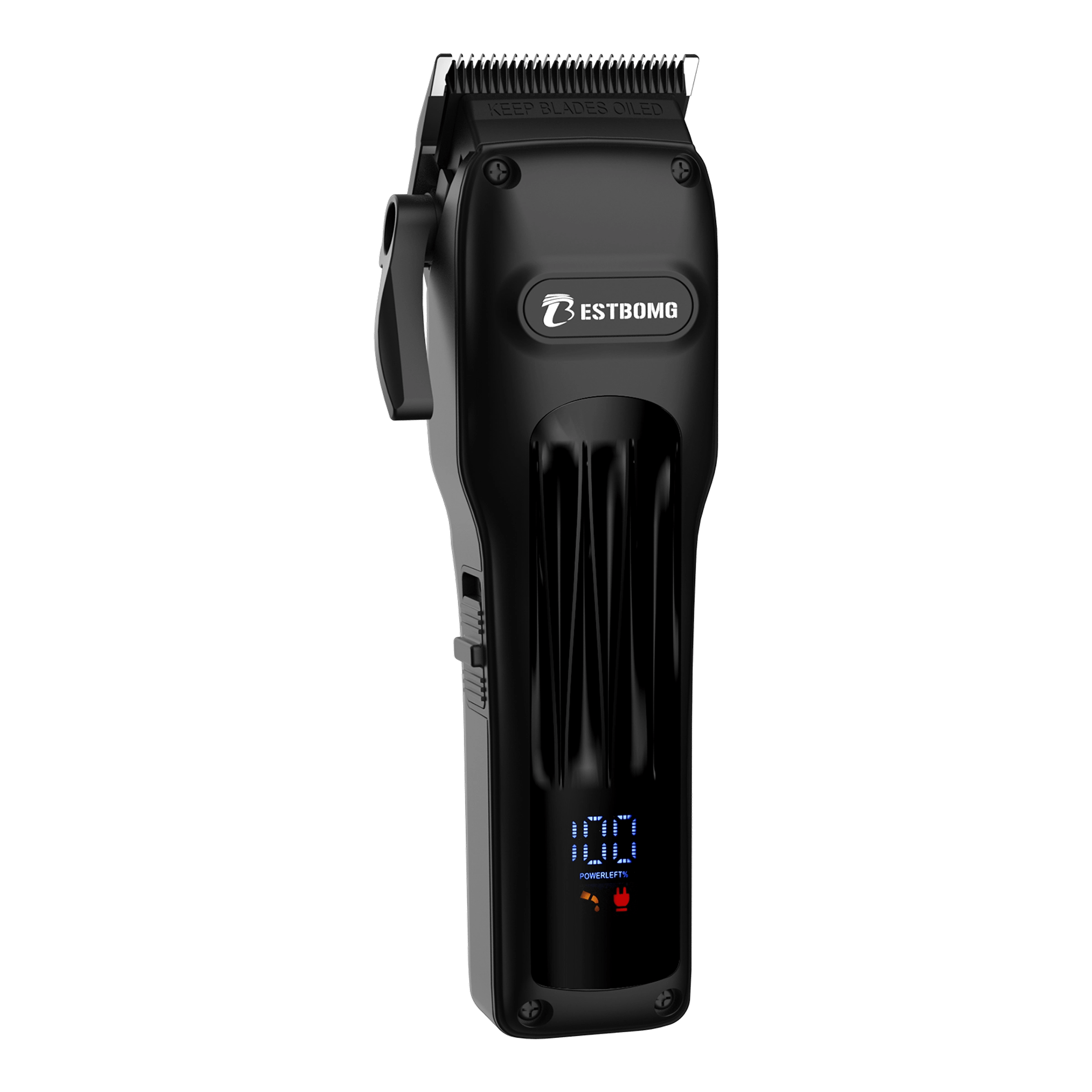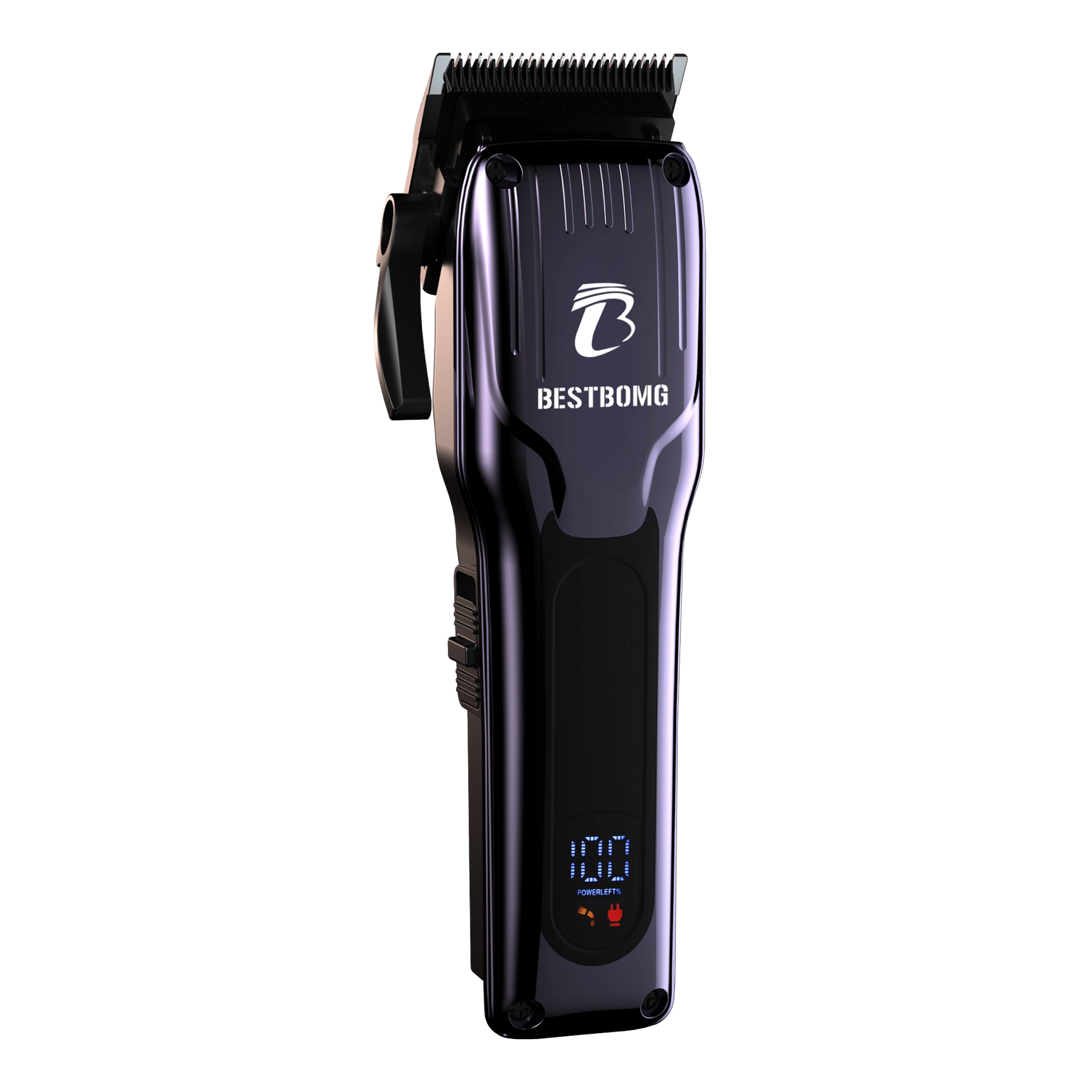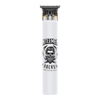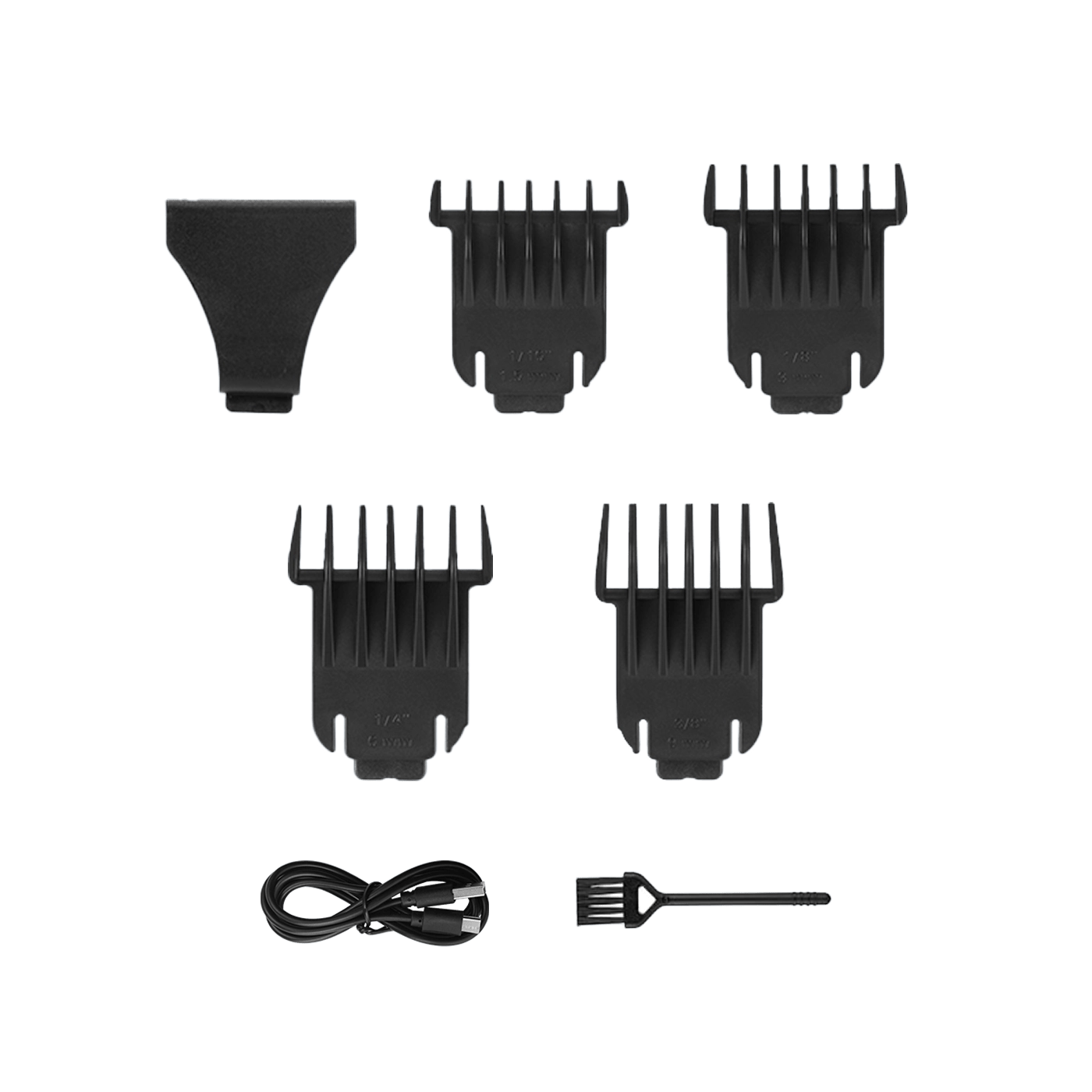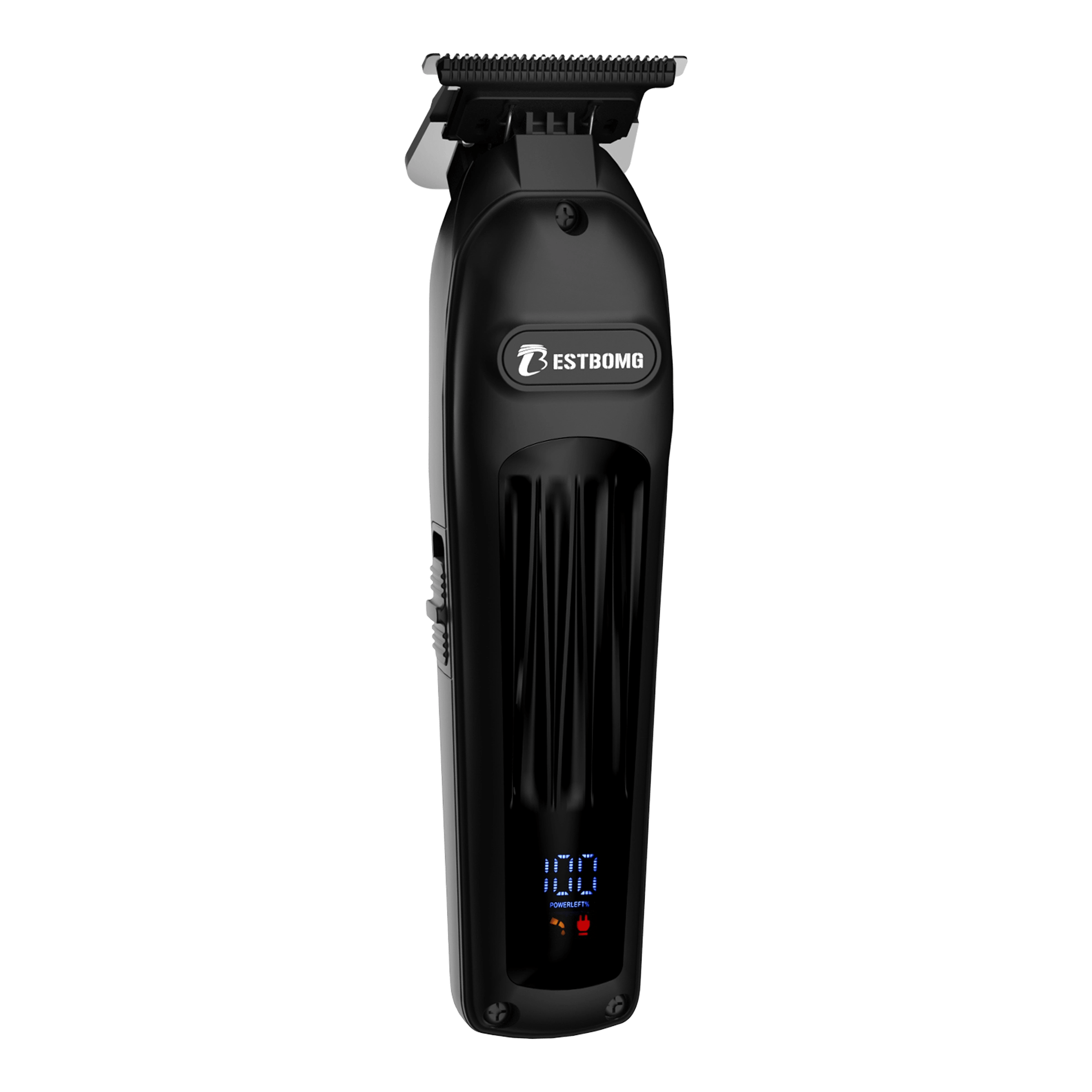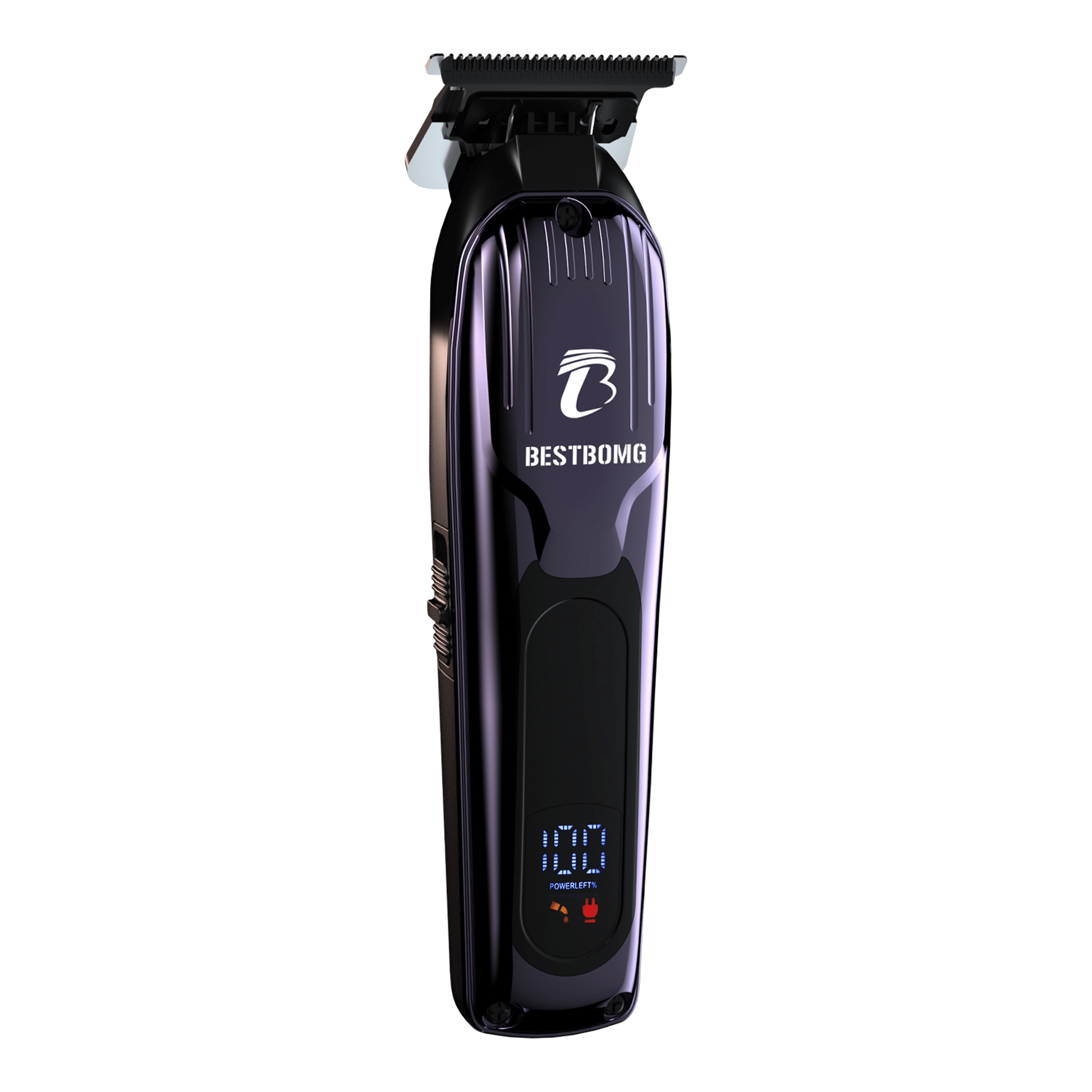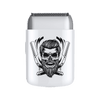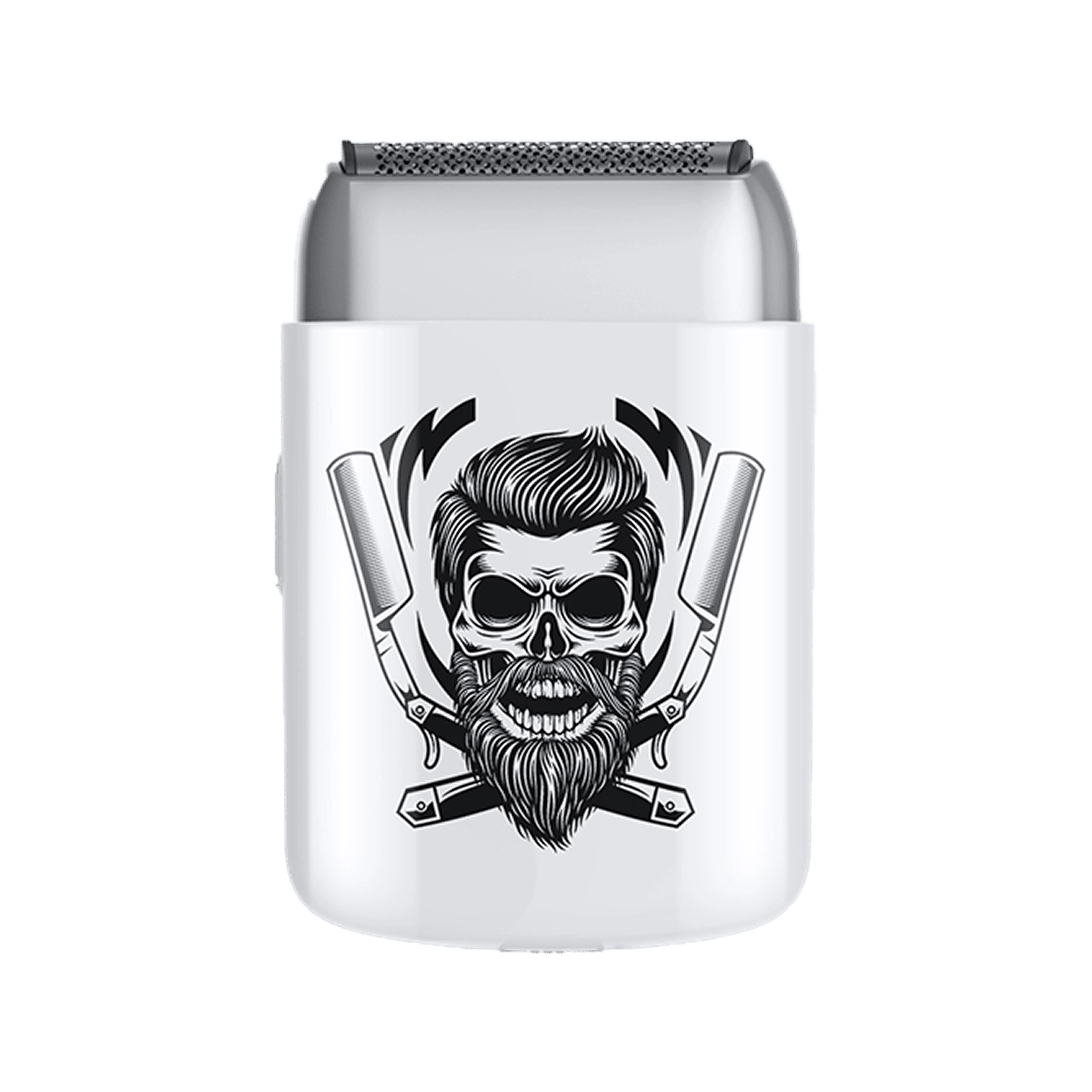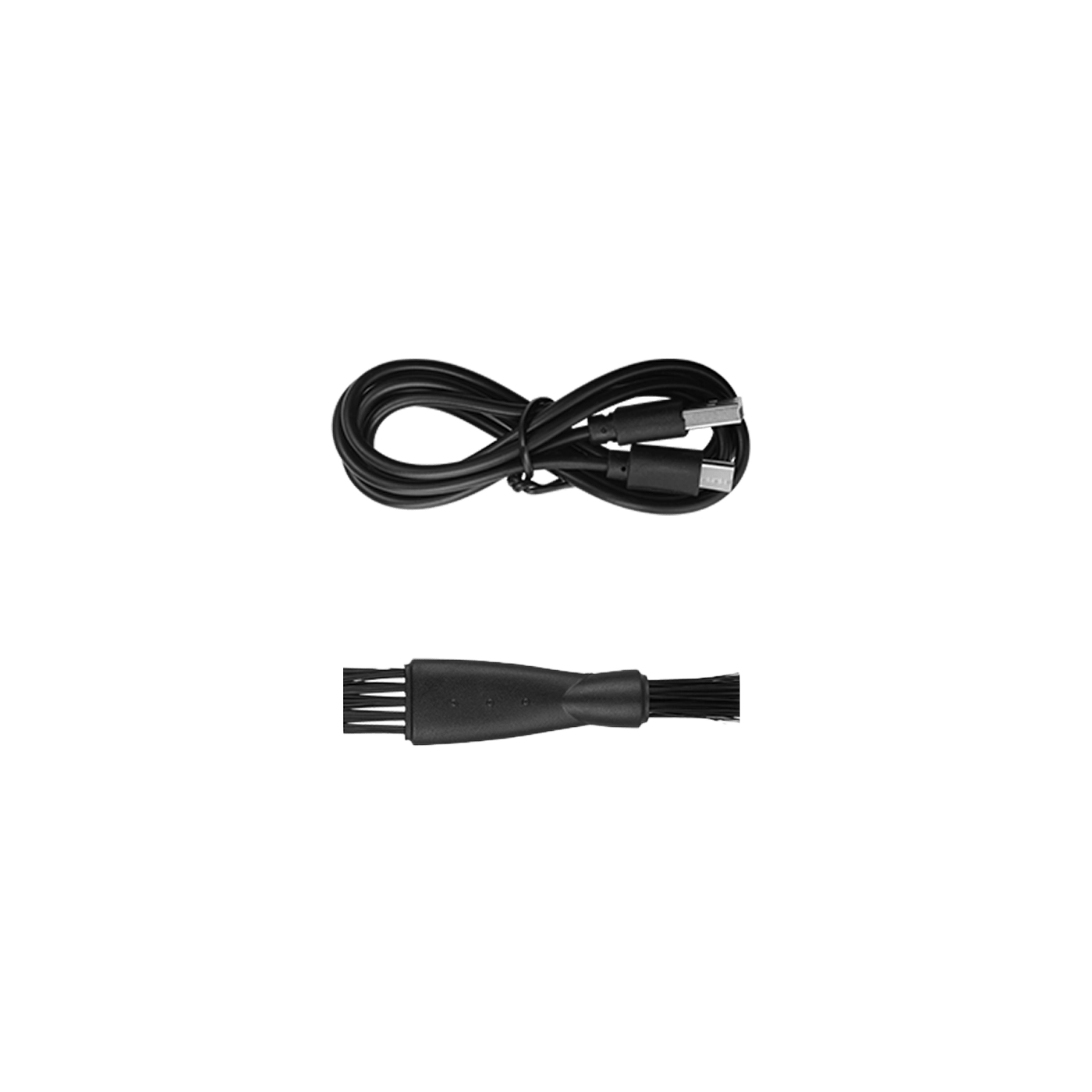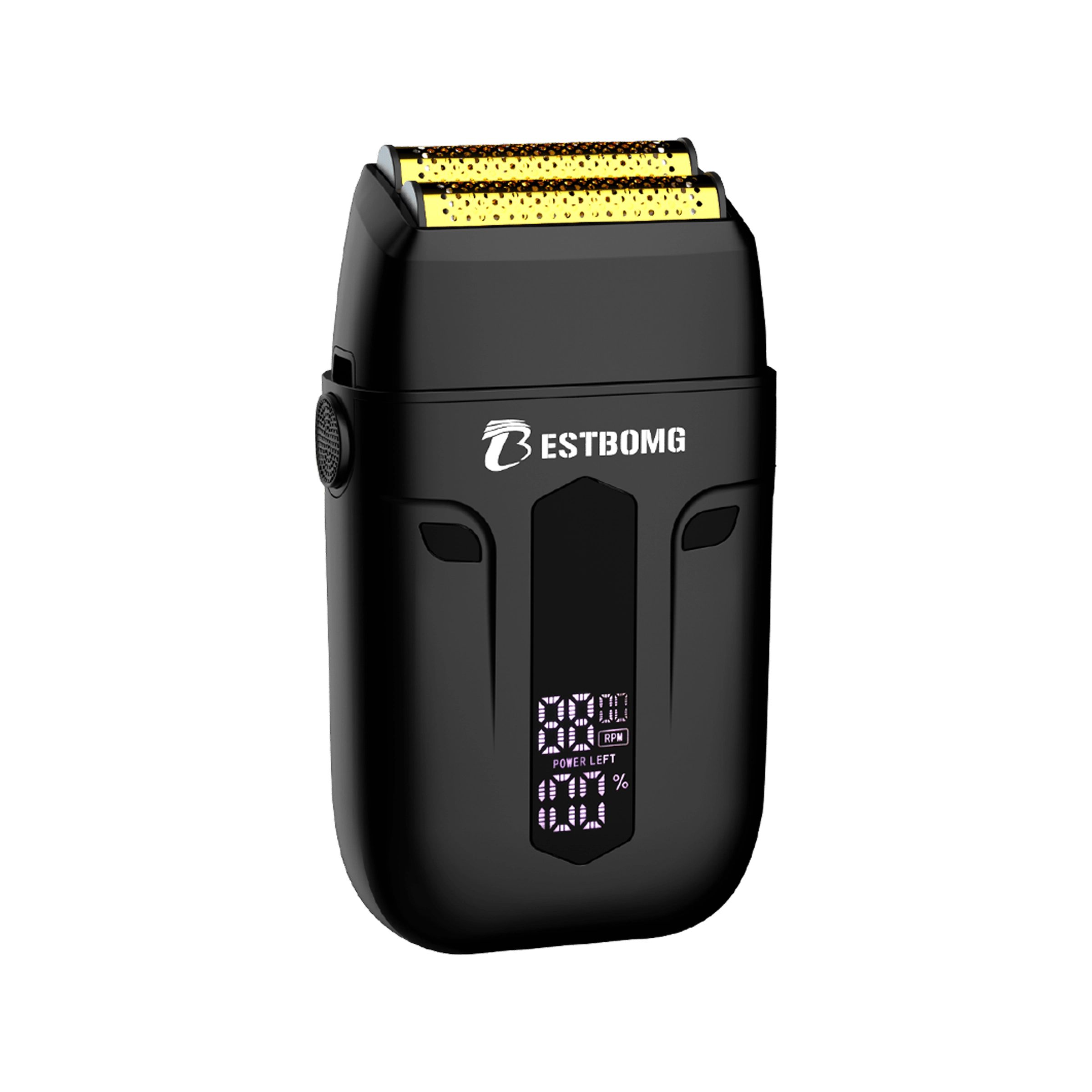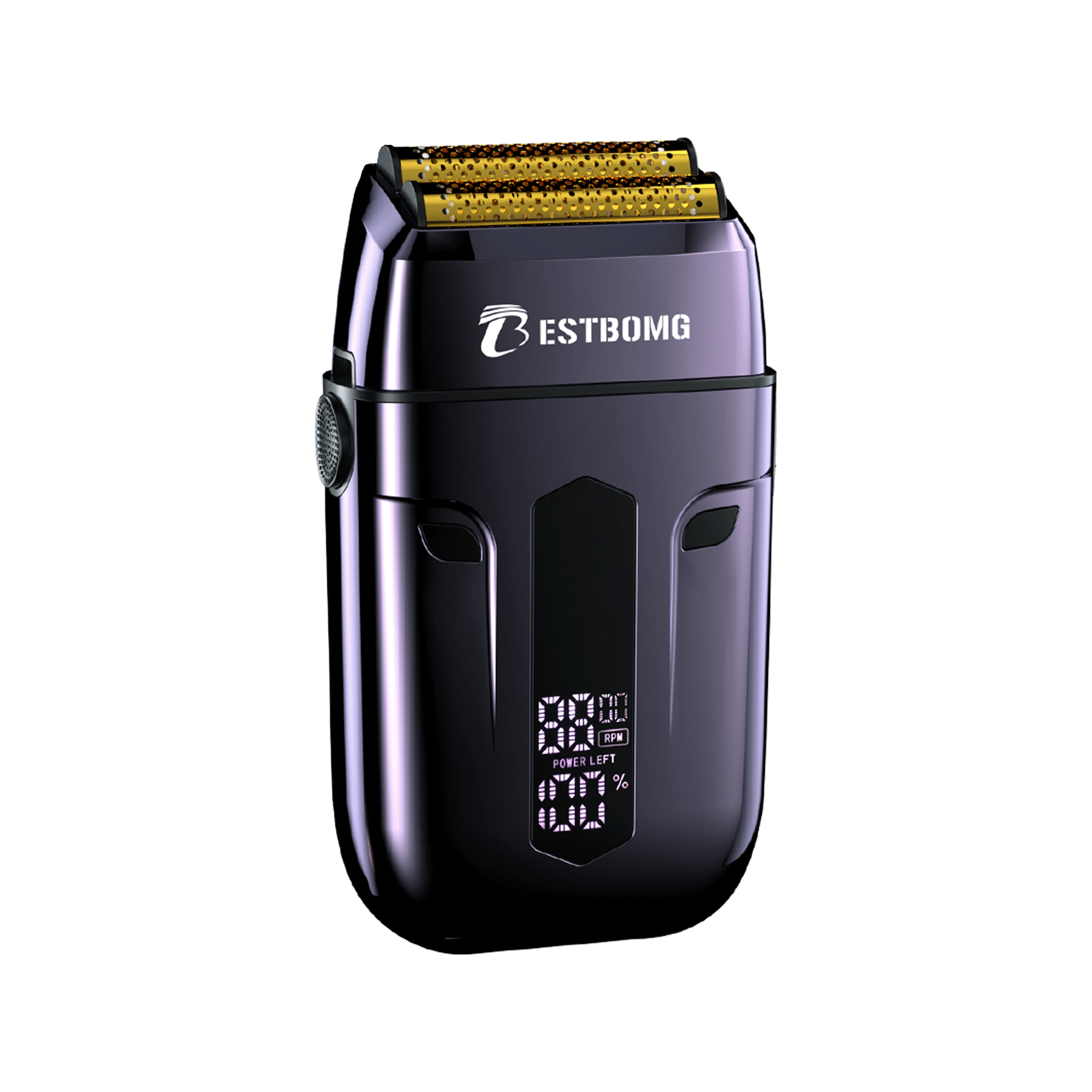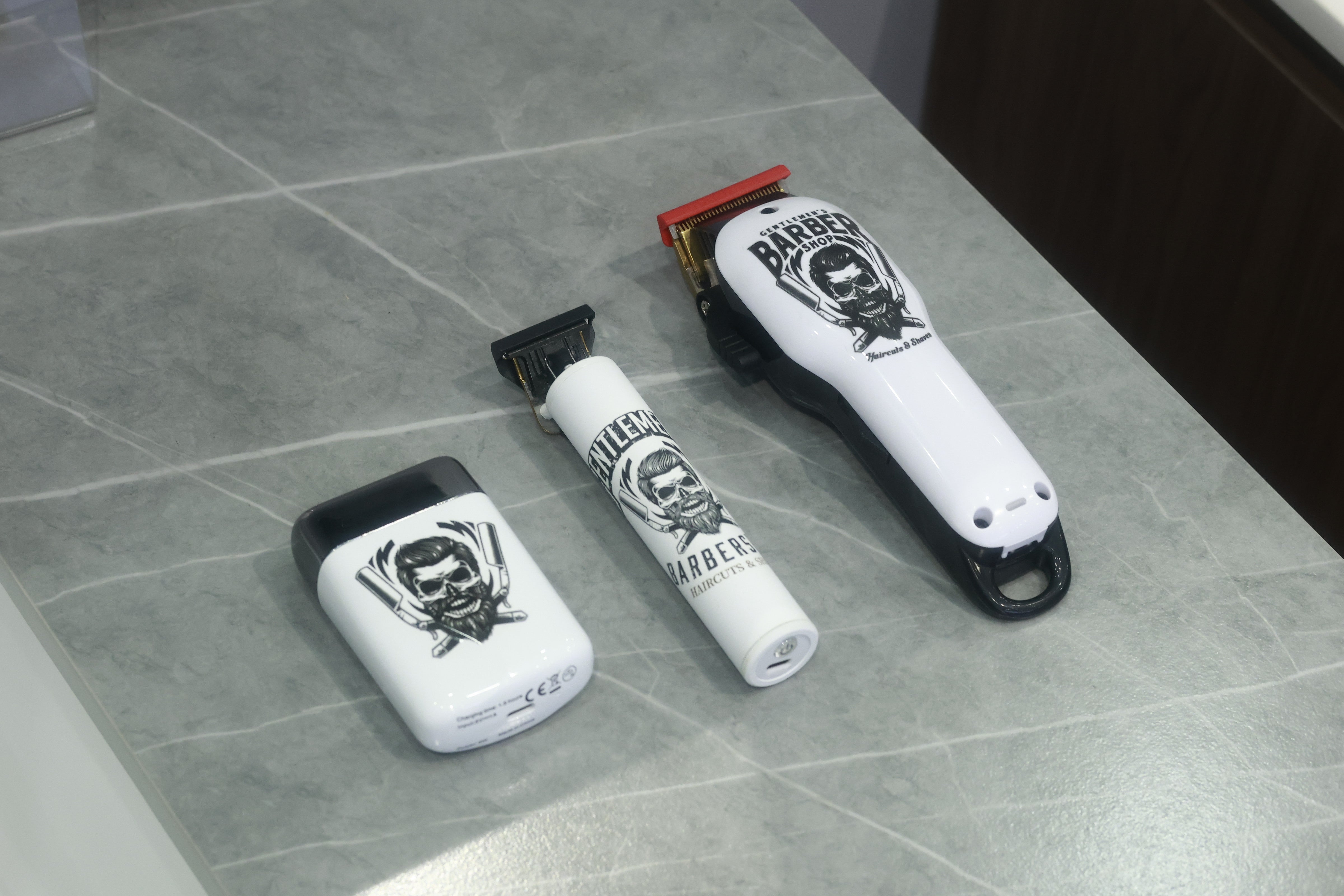If you’re building a simple grooming kit, the first question is usually beard trimmer vs hair clipper—what’s the difference, and which should you buy first? In short:
- Hair clippers are built to remove bulk quickly and cut longer lengths (think head hair and longer beards) with guards. They don’t cut as close to the skin as trimmers.
- Beard trimmers are designed for shorter hair and precision detailing—cheek lines, mustache edges, necklines, and stubble/short‑beard maintenance. They cut closer to the skin.
This guide breaks down trimmer vs clipper differences in plain English, shows when to use each, and gives quick, beginner‑safe steps. You’ll also find budget‑friendly, high‑value clipper picks you can rely on at home.
The quick verdict
- Daily stubble or short beards; crisp edges → Trimmer (closer cutting, narrow head = line precision).
- Head hair; longer beards (guarded lengths) → Clipper (bulk removal + even lengths with guards).
- Best results often come from using both—clippers for length, trimmers for edges and finishing. Pro/barber guides say the combo yields cleaner blends and sharper lines.
Foreshadowing the difference (at a glance)
|
Feature |
Hair Clipper |
Beard Trimmer |
|
Blade/teeth |
Wider blade, larger teeth to feed more hair |
Narrower blade/teeth for fine control |
|
Typical use |
Bulk cutting and longer lengths with guards |
Detailing, edging, stubble & short‑beard control |
|
Closeness |
Not as close to skin as trimmer/shaver |
Closer to skin for crisp lines |
|
Motion |
Against the grain; longer, steady passes |
Short, precise strokes; outline work |
|
Attachments |
Guard combs (#1–#8 etc.) |
Shorter combs/dials (small increments) |
|
Who it’s for |
Home haircuts, long beards, family cuts |
Daily facial grooming, lines, mustaches |
Wahl (a major clipper brand) sums this up plainly: clippers are for longer hair, trimmers are for shorter/finer hair and closer detailing. T3’s consumer guide echoes the same design distinction.
What is a clipper?
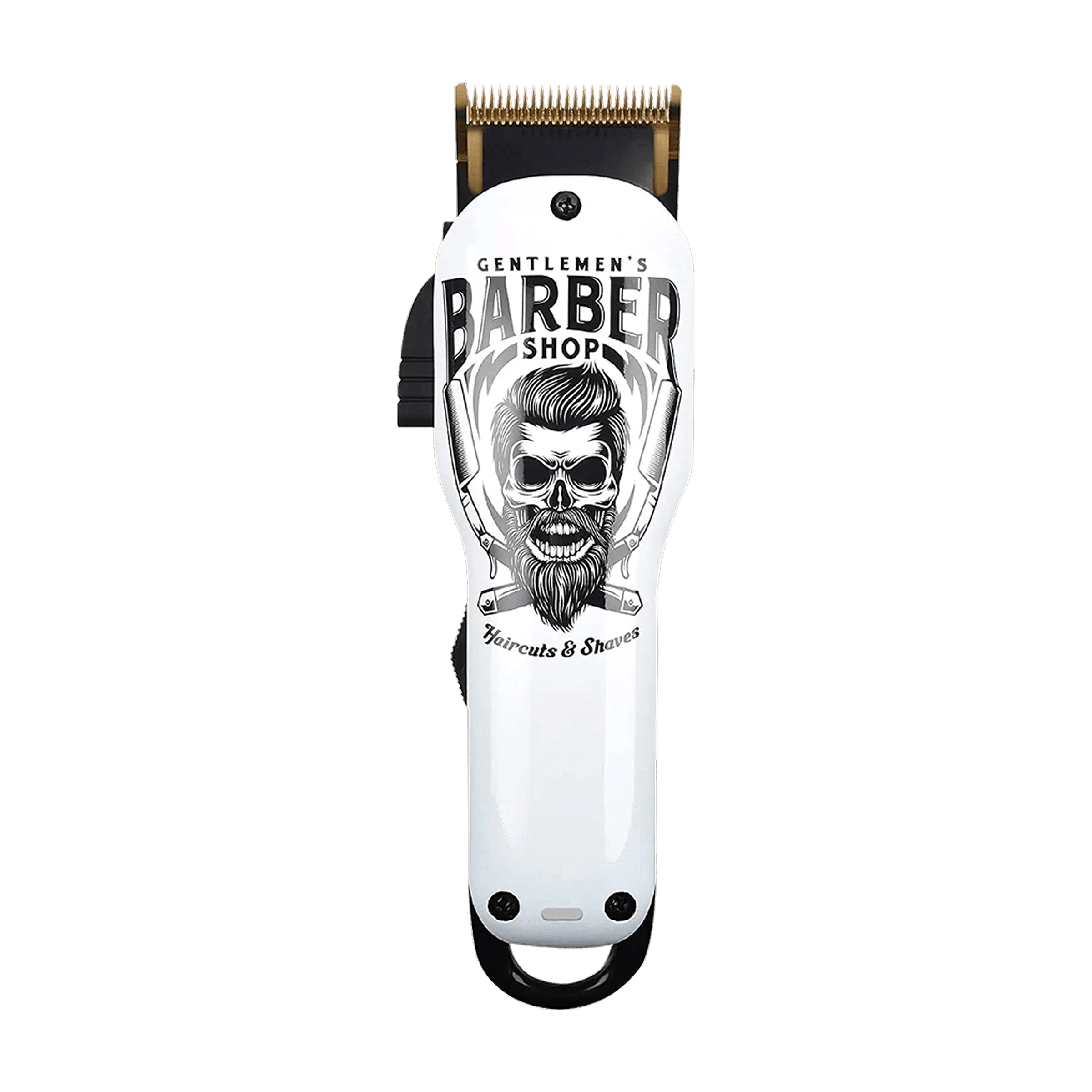
A clipper is a powered cutter with a wide blade and guard combs to set length. It’s made to remove bulk quickly and lay down an even length over large areas (sides/back of the head; longer beards). Because of blade geometry and guard spacing, a hair clipper won’t cut as close to skin as a trimmer or shaver—and that’s a feature, not a bug. You get predictable, uniform length without risk of scraping lines into the skin.
Guard numbers, in brief (Wahl chart):
#1 ≈ 1/8" (~3 mm) • #2 ≈ 1/4" (~6 mm) • #3 ≈ 3/8" (~10 mm) • #4 ≈ 1/2" (~13 mm) • up to #8 ≈ 1" (~25 mm). If a guard says “1 inch,” it reduces hair down to that length.
Taper lever = micro‑guard. Many clippers include a side taper lever that lets you fine‑tune between guard lengths: lever up = closer, lever down = longer. It’s a blending lifesaver.
What is a trimmer?
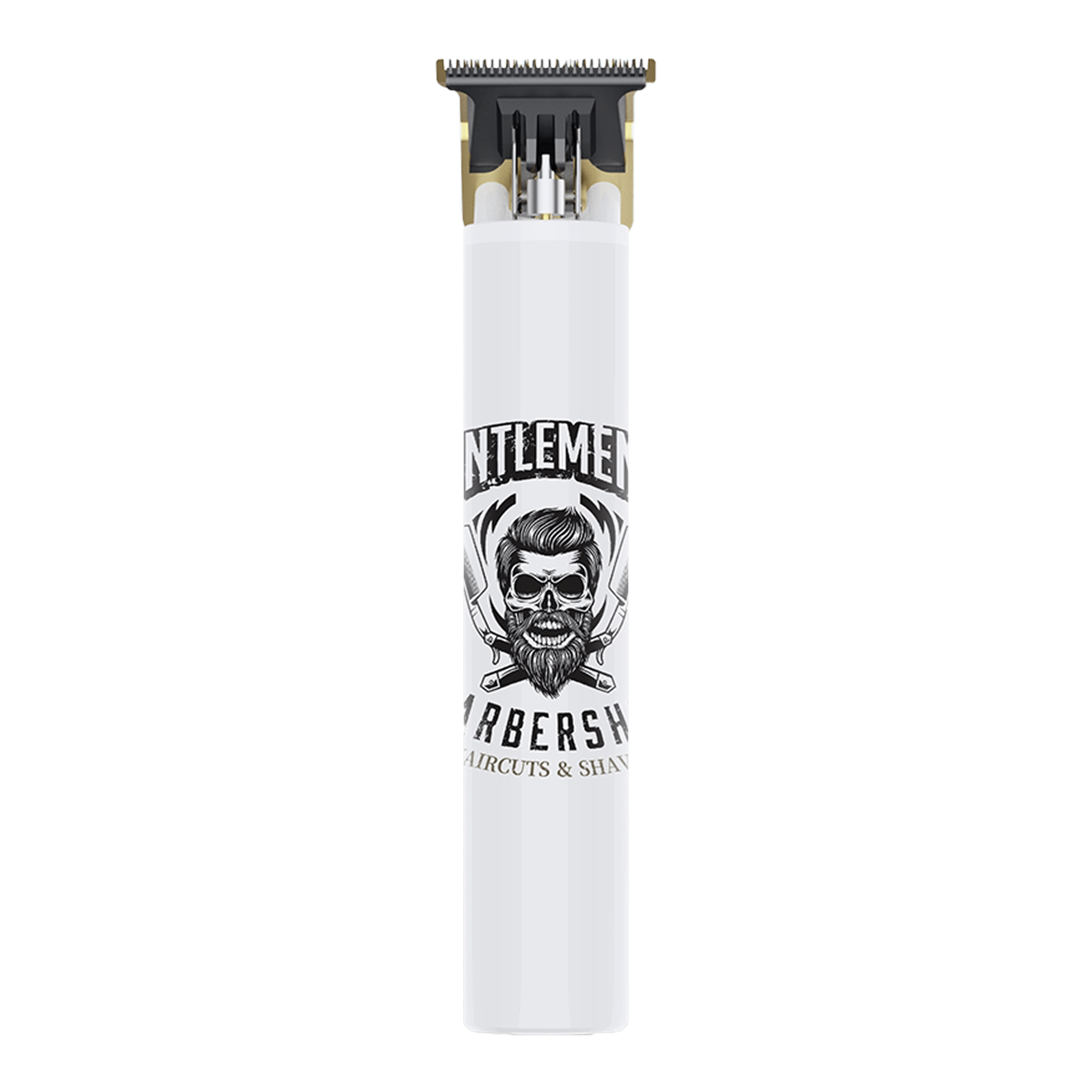
A trimmer has a narrower blade with finer teeth that cuts closer for precision work—cleaning cheek lines, tracing a mustache, tidying neckline/around ears, and maintaining stubble or short beards. Manufacturer guides call out trimmers for detailing and close control on face and body.
Consumer explainers match that: the key design difference is blade size and the intended length range—trimmers handle shorter settings and tighter areas, while clippers manage longer lengths with big guard sets.
Beard trimmer vs hair clipper: how to choose for your use case
Short beards & daily stubble (0.5–10 mm)
-
Pick a beard trimmer; it’s easier to dial a short, even length and keep lines crisp. Many trimmers have click dials or small combs with tight increments—perfect for consistent stubble.
Medium to long beards (10–25+ mm)
-
Use a clipper with guards for bulk and evenness, then switch to a trimmer for crisp cheek/neck edges and mustache detail. Barber blogs and brand pages note that having both tools makes blending and finishing simpler.
Head hair (home haircuts)
-
Use a clipper for the sides/back and overall length (buzz, crew, short‑back‑and‑sides), then trimmer for edging sideburns, around ears, and the neckline. Wahl’s education content and many consumer guides teach exactly this split.
Can you use hair clippers for beard trimming?

Yes—with guards. If your beard is medium/long, a clipper is great for reducing bulk and setting overall length. Just remember: a clipper alone won’t give razor‑sharp edges. For crisp cheek lines and mustache borders, finish with a trimmer (or a razor). Wahl explicitly frames clippers as the tool for longer hair, while trimmers are for closer detailing.
If you only buy one tool right now…
- Choose a clipper if you plan to do home haircuts (your own or family) and keep a medium/long beard. Look for a taper lever and a full guard set (#1–#8).
- Choose a trimmer if your priority is daily beard care (stubble to short beard) and lineups with minimal maintenance; you can still do light hair touch‑ups. Mainstream guides describe trimmers as the detail/short‑length tool.
Beginner how‑tos (fast and forgiving)
Quick, even beard trim (trimmer‑first method)
- Comb your beard down and out.
- Start longer than your target setting; trim with the grain once to knock bulk, then go against the grain for uniformity.
- Remove the guard or switch to a shorter setting to edge cheek lines and neckline with short, careful strokes.
- Rinse/brush the head if your model allows; oil per manufacturer’s advice (a few drops) to keep heat and tugging down. (Wahl shows exactly where to place the drops.)
Simple short‑back‑and‑sides at home (clipper‑first method)
- Hair clean and dry; plan your guards (e.g., #3 sides/back, #5 top).
- Sides/back: run against the grain up to the head’s ridge; roll your wrist out before the top.
- Blend the shadow with the taper lever (half‑open/closed) or drop one guard size for a few flicking strokes. (Wahl teaches “lever up = closer, down = longer.”)
- Top: use a longer guard or clipper‑over‑comb.
- Detail: use a trimmer (or clipper with lever up) to tap the neckline and sideburn bottoms.
Maintenance that actually matters
Whichever tool you use, fast maintenance = better cuts:
- Clean: Brush out hair after each use; if your model supports it, remove/rinse the blade (not the whole body).
- Disinfect (optional): Blade‑safe spray per label.
- Oil: Wahl recommends a drop at each corner and across the teeth; run 5–10 seconds and wipe excess. This cuts friction, noise, and heat—and prevents tugging.
Deep‑dive: design differences (why each feels different)

- Blade width & teeth spacing: Clipper blades are wider with bigger teeth to grab more hair fast; trimmers use narrow, fine‑tooth blades for accuracy in small areas. Consumer and brand explainers highlight blade size as the #1 difference.
- Length range: Clippers rely on guards (#1–#8, ~3–25 mm) for predictable, even lengths. Trimmers often use shorter guards or adjustable dials—great for stubble and close control.
- Closeness & finishing: Trimmers are meant to cut closer and outline; clippers give you a foundation (bulk/length) to blend. Wahl’s tool guide states this explicitly.
- Workflow synergy: Barber education and salon trade guides emphasize that using the right tool for each task yields cleaner fades and sharper lines—hence the “clipper + trimmer” combo in most shops.
Guard numbers you’ll actually use (quick chart)
|
Guard |
Inches |
Approx. mm |
Common use |
|
#1 |
1/8" |
~3 mm |
Very short sides/stubble |
|
#2 |
1/4" |
~6 mm |
Classic short sides |
|
#3 |
3/8" |
~10 mm |
Popular all‑over buzz |
|
#4 |
1/2" |
~13 mm |
Safer starter length |
|
#5–#6 |
5/8"–3/4" |
~16–19 mm |
Longer top options |
|
#7–#8 |
7/8"–1" |
~22–25 mm |
Extra length on top |
Wahl’s Guide Combs page explains guard behavior clearly (a #8 reduces hair down to 1").
Bottom line
- Pick a clipper for bulk and even guarded lengths (head hair and longer beards).
- Pick a trimmer for precision and closer work (lines, mustache, stubble).
- For the cleanest results, use both: clipper first, trimmer to finish. Barber and brand guides agree this combo delivers smoother blends and sharper edges.
Frequently Asked Questions
Are clippers or trimmers better for beards?
Both—for different jobs. Use a clipper (with guards) to set overall beard length, especially for medium/long beards. Use a trimmer to edge cheek lines, neckline, and mustache with closer cutting and precision. Manufacturer guides position clippers for bulk/length and trimmers for close detailing.
Can you use hair clippers for beard trimming?
Yes. For length control, clippers with guards are excellent on beards. For crisp edges and very short stubble work, finish with a trimmer. That split—bulk vs detail—is how brand and barber resources advise choosing tools.
Is a hair trimmer the same as a beard trimmer?
The term “trimmer” usually means a close‑cutting, narrower tool for detail work and short lengths, whether marketed as “beard,” “detail,” or “all‑in‑one.” It’s not the same as a clipper, which is wider and designed for longer lengths.
Are trimmer and clipper the same?
No. A clipper is for removing bulk and maintaining longer guarded lengths; a trimmer is for closer cuts and precision detailing. Using both often gives the best results—clippers to set length, trimmers to sharpen lines.
Which tool should I buy first—clipper or trimmer?
If you plan home haircuts or wear a medium/long beard, start with a clipper (full guard set + taper lever). If your priority is daily beard/stubble and lineups, start with a trimmer. T3’s comparison and Wahl’s definitions line up with this rule of thumb.
Lees meer
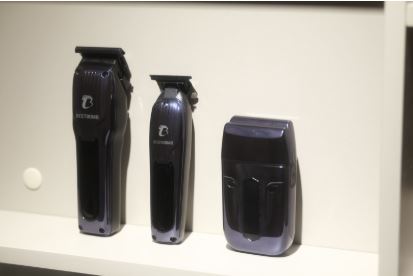
Best Budget Hair Clippers: Affordable Picks for Home Cuts
If you’re hunting the best budget hair clippers for home use (or your first barber kit), you want three things: clean cuts, dependable guards, and enough power to glide through hair without tugging...
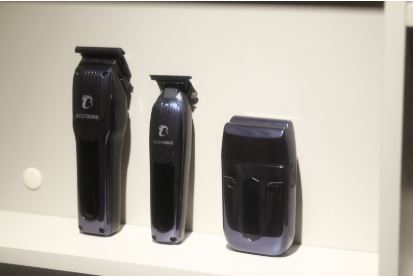
Can You Use Clippers to Shave Pubic Hair? Safe Grooming Guide
Short answer: You can safely use clippers to trim pubic hair (reduce length) as long as you use guards, keep skin taut, and go slowly. For a truly bare, skin‑close shave, use a body‑rated trimmer o...
